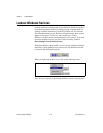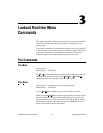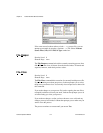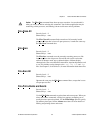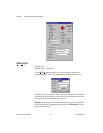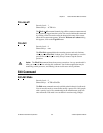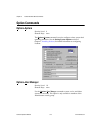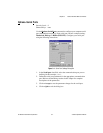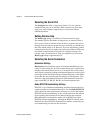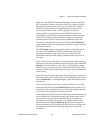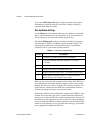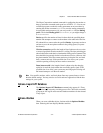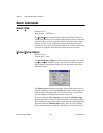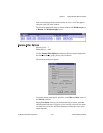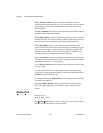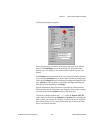Chapter 3 Lookout Runtime Menu Commands
Lookout Operator’s Manual 3-8 www.natinst.com
Selecting the Serial Port
The Serial port data field is a drop-down listbox. Use it to select the
communication port you are defining. While software may allow many
serial ports, most computers support only two serial ports without
additional hardware.
Setting Receive Gap
The Receive gap setting is available for all serial connection types.
This number specifies the number of empty bytes (or amount of time) a
driver receives from a controller before the driver recognizes the end of a
message frame and asks for another message. Normally, you should leave
this at the default setting of 20. However, if you are experiencing garbled
communication alarms, you might try increasing this number to allow more
time before Lookout decides it has received a complete message. For
example, with a slow baud rate of 1200, you might have to increase the
Receive gap setting to approximately 30.
Selecting the Serial Connection
Hardwired Settings
Hardwired serial connections require no hardware handshaking for line
control. Use this setting for all serial communication types except dial-up
telephone and remote radio transceivers. You should also use this setting
when directly connecting Lookout to the Master Repeater on a radio system
or through a leased-line modem. Because a Master Repeater is a full duplex
device that does not require keying and unkeying of the frequency, it acts
much like a physically hardwired network. Other hardwired connection
types include RS-232, RS-422, RS-485, and leased telephone lines.
Radio RTS/CTS Handshaking Settings
RTS/CTS is a local hardware handshaking mechanism between the local
computer and the local communication device. Use the Radio (RTS/CTS)
serial connection when connecting the serial port to a device that requires
RTS/CTS hardware handshaking, such as a radio transceiver that must be
keyed up during data transmission and unkeyed during data reception.
Other half-duplex communication media such as RS-485 may require
RTS/CTS hardware handshaking. Although the RTS/CTS scheme works
identically for other RTS/CTS communication schemes, assume that you
are communicating via radio for this discussion.



